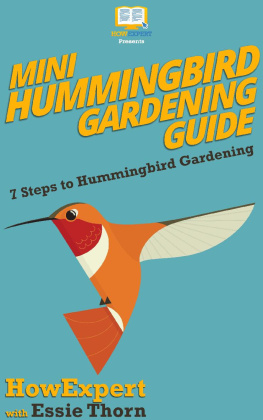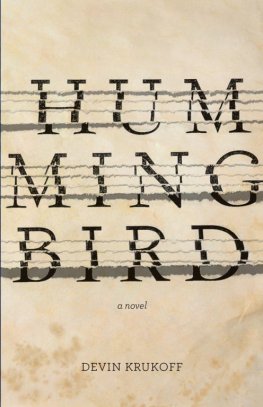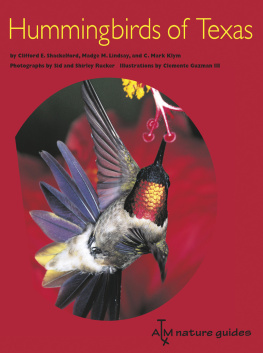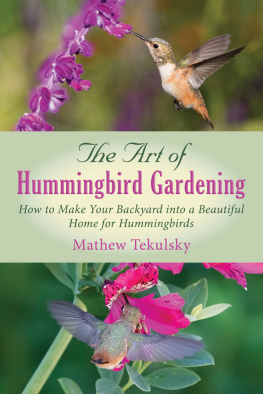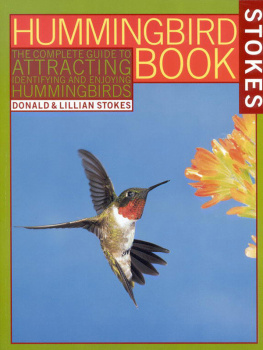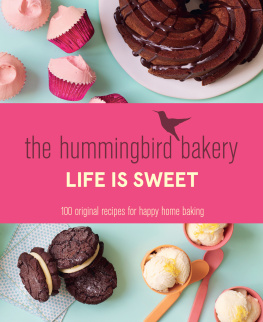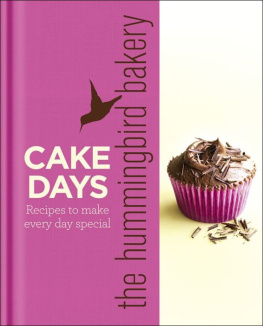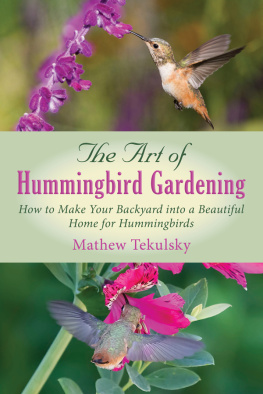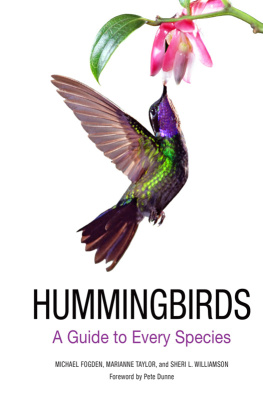HowExpert Presents
Mini Hummingbird Gardening Guide
7 Steps to Hummingbird Gardening
HowExpert with Essie Thorn
Copyright HowExpert
www.HowExpert.com
For more tips related to this topic, visit HowExpert.com/hummingbird .
Recommended Resources
- HowExpert.com Quick How To Guides on All Topics from A to Z by Everyday Experts.
- HowExpert.com/free Free HowExpert Email Newsletter.
- HowExpert.com/books HowExpert Books
- HowExpert.com/courses HowExpert Courses
- HowExpert.com/membership HowExpert Membership Site
- HowExpert.com/writers Write About Your #1 Passion/Knowledge/Expertise & Become a HowExpert Author.
- HowExpert.com/resources Additional HowExpert Recommended Resources
- YouTube.com/HowExpert Subscribe to HowExpert YouTube.
- Instagram.com/HowExpert Follow HowExpert on Instagram.
- Facebook.com/HowExpert Follow HowExpert on Facebook.
Copyright, Legal Notice and Disclaimer:
Copyright by HowExpert (Owned by Hot Methods). All Rights Reserved Worldwide. No part of this publication may be reproduced in any form or by any means, including scanning, photocopying, or otherwise without prior written permission of the copyright holder.
Disclaimer and Terms of Use: Please note that much of this publication is based on personal experience and anecdotal evidence. Although the author and publisher have made every reasonable attempt to achieve complete accuracy of the content in this Guide, they assume no responsibility for errors or omissions. Also, you should use this information as you see fit, and at your own risk. Your particular situation may not be exactly suited to the examples illustrated here; in fact, it's likely that they won't be the same, and you should adjust your use of the information and recommendations accordingly.
The author and publisher do not warrant the performance, effectiveness or applicability of any sites listed or linked to in this book. All links are for information purposes only and are not warranted for content, accuracy or any other implied or explicit purpose.
Any trademarks, service marks, product names or named features are assumed to be the property of their respective owners, and are used only for reference. There is no implied endorsement if we use one of these terms.
No part of this book may be reproduced, stored in a retrieval system, or transmitted by any other means: electronic, mechanical, photocopying, recording, or otherwise, without the prior written permission of the author.
Any violation by stealing this Book or downloading or sharing it illegally will be prosecuted by lawyers to the fullest extent. This publication is protected under the US Copyright Act of 1976 and all other applicable international, federal, state and local LAWS and all rights are reserved, including resale rights: you are not allowed to give or sell this Guide to anyone else.
This publication is designed to provide accurate and authoritative information with regard to the subject matter covered. It is sold with the understanding that the authors and publishers are not engaged in rendering legal, financial, or other professional advice. laws and practices often vary from state to state and if legal or other expert assistance is required, the services of a professional should be sought. the authors and publisher specifically disclaim any liability that is incurred from the use or application of the contents of this book.
Copyright by HOWEXPERT (Owned by Hot Methods)
ALL rights reserved worldwide.
Table of Contents
Introduction
If you enjoy the sights and sounds of hummingbirds, you may be surprised to learn how easy and fun it is to create a garden for them within your space. Whether you have a large area to work with, or just a patio or porch, you can be a host for the hummingbirds in your local area by using these 7 simple steps to creating your own hummingbird garden.
Hummingbirds are a delightful addition to any garden since they bring iridescent beauty in flight and aerial dynamics at play. Hummingbirds also earn their keep by eating spiders, aphids, and gnats, among other pests. They are fast little zippers when they dive bomb each other at the feeder, yet peacefully graceful as they hum from flower to flower in the garden. A true miracle in flight, hummingbirds are capable of amazing aeronautics not found in other birds. Not only can they hover in midair, but they can also fly backward. Their wings beat so fast that it produces the humming sound we hear as they buzz by.
Hummingbirds have good taste when it comes to plants. They enjoy red, tubular shaped blossoms, but will also visit other colors and shapes of blooms as well. Your garden can include a variety of plants, not just red ones. There is a large assortment of flowers, trees, and shrubs that attract hummingbirds, so it is usually very easy to find some of your favorites on the list.
Step 1: Do Your Hummingbird Homework
Are Hummingbirds Found Where You Live?
Hummingbirds are only found in the Western Hemisphere. Hummers are not physically able to cross the Atlantic Ocean, so they are not found naturally in Europe. North and Central America are the lands that they call home. In some areas, hummingbirds are only seen in migration. If you live in Canada, the United States, Mexico, Central America, the Leeward Islands, Hispaniola, or South America, then you can enjoy the rewarding hobby of hummingbird gardening.
As mentioned above, hummingbirds are not found all over the globe. A variety species are found in different countries and at different times of the year. Some areas are used as nesting grounds, and some areas only see hummingbirds during migration.
I find it easier to identify the hummers after they start coming to your garden than to learn which species I can expect to see beforehand, but you can choose to do it either way. There are several great websites for hummingbirds as well as a good old trip to the local library to check out books on this topic. I recommend obtaining a Hummingbird Field Guide which features images or drawings that you can take outside with you or keep handy on the windowsill closest to your garden. Then, when you see a hummingbird at one of your plants or feeders, you can quickly look it up using the pictures and then learn more about that species in the description section. There are many great online bird guides available, too. One of my favorites is the website for the Cornell Lab of Ornithology found at allaboutbirds.org Here you can identify birds not only by appearance but also by their songs and calls.
Hummingbirds are found in 48 different countries in the Americas, and many countries have several or more species. Only one species of hummingbird visits the eastern coast of the United States, the Ruby-throated Hummingbird. But the western half of the country is full of hummingbird varieties. Dont be discouraged if you live in the east because you can still enjoy gardening for hummers, even if it is only for one species. The Ruby-throated Hummingbird is the most widespread and popular of all hummers, and a gorgeous presence in your garden.
Step 2: Sketch Your Blueprint
Step 2.1 - Study Your Space
Whenever I am preparing to put in a new garden, the first thing I always begin with is studying the space I am going to be working with. Preferably, I like to watch the area over time and seasons to become familiar with the dynamics of light and shade that play out in the flower bed. The sun casts longer shadows in my yard during the winter time than it does during the summer time. So, I like to take this into consideration when planning for the garden because patches of ground that receive sunlight during the summer may be shady during winter. And vice versa in that areas that appear to be shady in the winter may get more sunshine during the summer.
Next page
